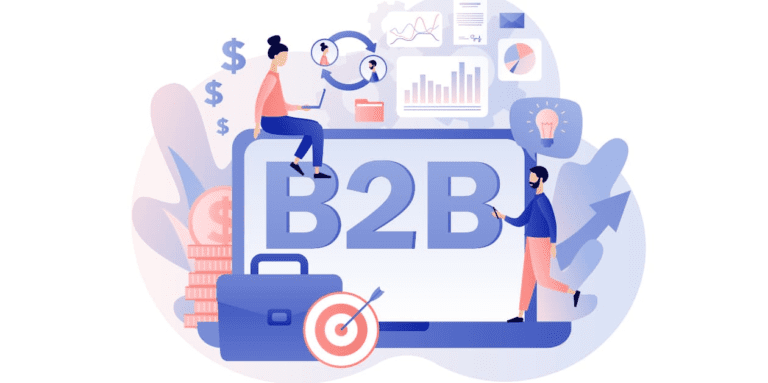The B2B fintech sector aims to find solutions through technology to make institutional operations more efficient, strengthen security frameworks and ensure strict regulatory compliance.
B2B companies have much higher transaction volumes, more complex workflows, and increasingly stringent regulatory standards compared to their B2C counterparts.
The rapid evolution of B2B banking technology is driven by numerous transformative solutions created to solve pressing challenges among financial institutions.
What was once again a buzzword close to being synonymous with disruptive innovation, fintech does much more; it is transforming financial services. It brings technology to every element of finance, automating, refining and reinventing payments, lending, insurance, core banking and wealth management.
As digital transformation continues to gain momentum, fintech is fundamentally reshaping financial service delivery, delivering unprecedented improvements in efficiency, security and accessibility.
While there is a new era of fintech in consumer-centric apps and services, an equally important and often overlooked space is B2B fintech in the banking technology space. The complex infrastructure that allows financial institutions to operate smoothly is at the heart of fintech.
Fintech B2B ecosystem: the little-known power
Although B2C fintech is mainly in the spotlight when it comes to ease of use in the everyday consumer experience, B2B fintech forms a strong and robust ecosystem to meet the relatively complex requirements of businesses and financial institutions .
This sector aims to find solutions through technology to make institutional operations more efficient, strengthen security frameworks and ensure strict regulatory compliance.
The challenges are different: much higher transaction volumes, more complex workflows and ever-stricter regulatory standards compared to their B2C counterparts. These applications not only automate but assimilate other advanced technologies such as AI, blockchain and APIs to enable deep and secure integrations, enabling smoother business processes.
The rapid evolution of B2B banking technology is driven by numerous transformative solutions created to solve pressing challenges among financial institutions. Let’s break them down to describe the pillars that shape this space. Below are the main components of the evolution of B2B banking technology:
- Digital channels and customer lifecycle management (CLM): Gone are the days when all points of contact were physical branches and phone lines. Given the number of digital channels available, a financial institution can now reach its customers through various online gateways in a seamless and hassle-free end-to-end journey for the customer. These platforms powered by analytics and AI optimize the business-customer relationship, from acquisition to retention.
- Digital automation: It is the automation of seemingly mundane tasks such as compliance checks or offering intelligent customer support, where the concept of digital automation addresses artificial weaknesses such as human errors to improve efficiency large-scale banking operations. It’s this quiet motor that keeps everything running smoothly.
- Digital loan: Digital lending platforms with various algorithms and data analytics streamline everything from credit scoring to loan disbursements. Thus, processes become faster and much more accurate since financial institutions can now meet the demand for faster loan services while being fast and secure.
- Digital payment solutions: Payment solutions supporting large business-to-business transactions in terms of organization, security and compliance. Today’s world is changing at a rapid pace and the solution ensures that high-value payments are processed and settled quickly and securely in accordance with strict industry standards.
- Digital Business Automation: Businesses need solutions that are more tailored to specific complex financial transactions and, where applicable, digital business automation is no different. The platforms contribute to both speed and accuracy by enabling the automation of complex workflows and financial transactions for enterprise customers, giving them the speed they need in a financial environment high stakes.
- Trade finance and supply chain solutions: The risks and inefficiencies of international trade have changed dramatically due to the emergence of digital platforms. It connects global financial systems with supply chains to make cross-border transactions secure, transparent and efficient.
- Cash and liquidity management: For businesses, cash flow and liquidity must be properly controlled in order to maintain stability, above all, in turbulent markets. Real-time insights from cash management platforms enable businesses to optimize their cash reserves while mitigating financial risks. These tools are no longer desirable but essential to help businesses survive in the most turbulent financial landscapes.
- Reg Technology: The B2B fintech space is slowly becoming a stronghold in the field of regulatory technology, or Regtech. Faced with today’s regulatory complexity, institutions are turning to the right type of technology that can automate their organizational compliance functions. From real-time reporting to automated monitoring, Regtech ensures that the institution complies with the rules and its resources remain manageable in tandem.
- Universal and next generation core banking systems: Banks can no longer afford to rely on legacy systems. Next-generation core banking platforms are designed to be flexible, scalable and digitally focused, and enable banks to meet the modern demands of modern customers. Modern infrastructures will pave the way for new features and more personalized and responsive services.
B2B fintech will play a central role in shaping the future of financial services. Given the ever-increasing demand for digital solutions, automation and cutting-edge financial tools, institutions that do so will remain competitive and ensure greater operational efficiency, greater security and greater satisfaction of constantly changing expectations. evolution of companies and their customers.

